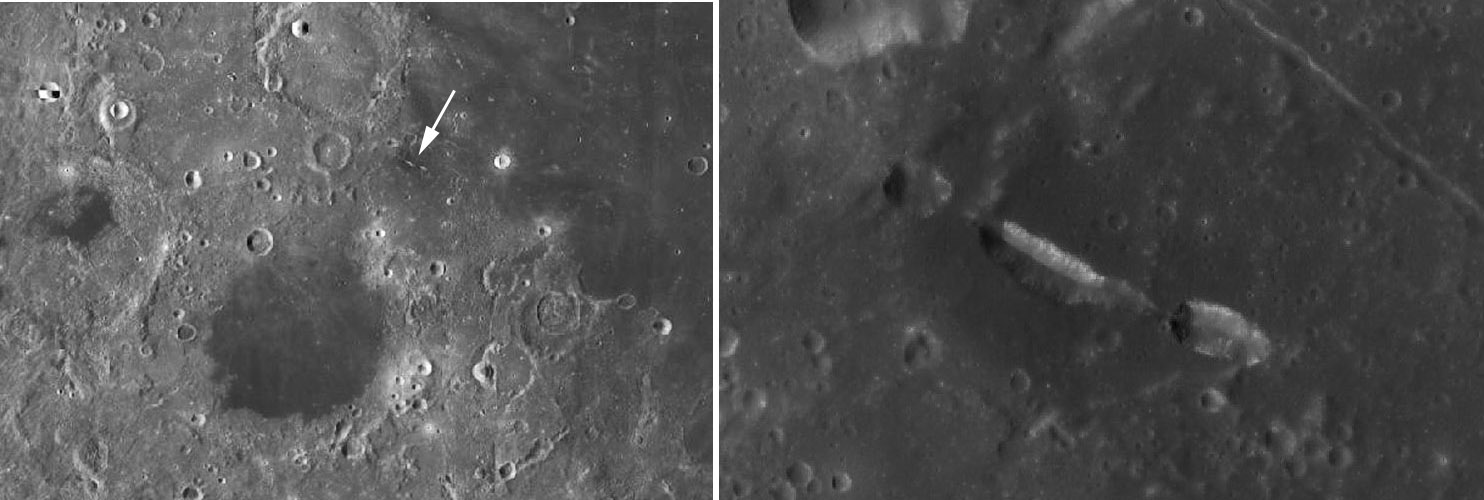Difference between revisions of "February 14, 2012"
| Line 3: | Line 3: | ||
<!-- ws:start:WikiTextHeadingRule:0:<h1> --> | <!-- ws:start:WikiTextHeadingRule:0:<h1> --> | ||
<!-- ws:start:WikiTextLocalImageRule:6:<img src="/file/view/LPOD-Feb14-12.jpg/301469266/LPOD-Feb14-12.jpg" alt="" title="" /> -->[[File:LPOD-Feb14-12.jpg|LPOD-Feb14-12.jpg]]<!-- ws:end:WikiTextLocalImageRule:6 --><br /> | <!-- ws:start:WikiTextLocalImageRule:6:<img src="/file/view/LPOD-Feb14-12.jpg/301469266/LPOD-Feb14-12.jpg" alt="" title="" /> -->[[File:LPOD-Feb14-12.jpg|LPOD-Feb14-12.jpg]]<!-- ws:end:WikiTextLocalImageRule:6 --><br /> | ||
| − | <em>image from [http://target.lroc.asu.edu/da/qmap.html | + | <em>image from [http://target.lroc.asu.edu/da/qmap.html Lunar Reconnaissance Orbiter Quick Map]</em><br /> |
<br /> | <br /> | ||
| − | Do you remember the lovely pyroclastic ring on the south of Orientale - and its <em>[http://lpod.wikispaces.com/April+22%2C+2009 blue lips]</em> central vent? The Soviets noticed the dark ring long ago and called it [http://lpod.wikispaces.com/July+6%2C+2008 Mare Pacificus]. That unaccepted name was inappropriate because the darkness was from ash not lava. But now Ray Hawke and his fire-breathing, pyroclast-chasing cohorts have [http://www.lpi.usra.edu/meetings/lpsc2012/pdf/1749.pdf | + | Do you remember the lovely pyroclastic ring on the south of Orientale - and its <em>[http://lpod.wikispaces.com/April+22%2C+2009 blue lips]</em> central vent? The Soviets noticed the dark ring long ago and called it [http://lpod.wikispaces.com/July+6%2C+2008 Mare Pacificus]. That unaccepted name was inappropriate because the darkness was from ash not lava. But now Ray Hawke and his fire-breathing, pyroclast-chasing cohorts have [http://www.lpi.usra.edu/meetings/lpsc2012/pdf/1749.pdf found] more hot lips that are just big enough and just well enough positioned to be observable from Earth. This new pyroclastic deposit is just north of Grimaldi. There are three separate vents, the biggest is about 3 km wide, 12 km long and 1 km deep. These vents are visible in early [http://www.lpi.usra.edu/resources/cla/info/e27/ photos] from Earth and were [http://www.lpi.usra.edu/resources/mapcatalog/usgs/I740/ identified] along with the surrounding pyroclastic deposit nearly 40 years ago. It is interesting that these vents look so much like the Pacificus one, but that the pyroclastic deposit here is much closer to the vent than the 175 km wide ring at Pacificus; that eruption must have been unusally powerful. I must admit that it is embarassing that I never knew of these vents. I wonder if there are more, small enough to have gone unnoticed. If others are old enough that their ashy mantles were stirred by meteoritic gardening they might not be dark today and thus would be harder to notice. One final note - the edges of two of these Grimaldi vents are sharply defined - I wonder if they are younger than the typical 3.6 b.y. age of lunar volcanism?<br /> |
<br /> | <br /> | ||
| − | <em>[mailto:tychocrater@yahoo.com | + | <em>[mailto:tychocrater@yahoo.com Chuck Wood]</em><br /> |
<br /> | <br /> | ||
<strong>Related Links</strong><br /> | <strong>Related Links</strong><br /> | ||
Revision as of 17:45, 11 January 2015
More Hot Lips

image from Lunar Reconnaissance Orbiter Quick Map
Do you remember the lovely pyroclastic ring on the south of Orientale - and its blue lips central vent? The Soviets noticed the dark ring long ago and called it Mare Pacificus. That unaccepted name was inappropriate because the darkness was from ash not lava. But now Ray Hawke and his fire-breathing, pyroclast-chasing cohorts have found more hot lips that are just big enough and just well enough positioned to be observable from Earth. This new pyroclastic deposit is just north of Grimaldi. There are three separate vents, the biggest is about 3 km wide, 12 km long and 1 km deep. These vents are visible in early photos from Earth and were identified along with the surrounding pyroclastic deposit nearly 40 years ago. It is interesting that these vents look so much like the Pacificus one, but that the pyroclastic deposit here is much closer to the vent than the 175 km wide ring at Pacificus; that eruption must have been unusally powerful. I must admit that it is embarassing that I never knew of these vents. I wonder if there are more, small enough to have gone unnoticed. If others are old enough that their ashy mantles were stirred by meteoritic gardening they might not be dark today and thus would be harder to notice. One final note - the edges of two of these Grimaldi vents are sharply defined - I wonder if they are younger than the typical 3.6 b.y. age of lunar volcanism?
Chuck Wood
Related Links
Rükl plate 39



